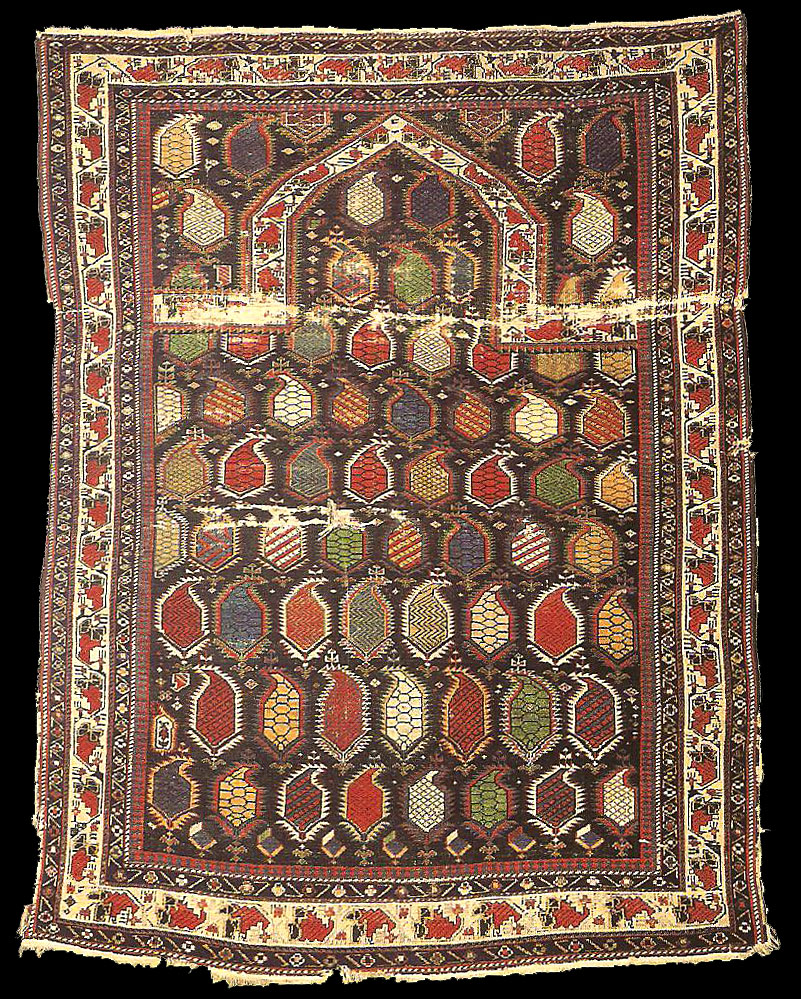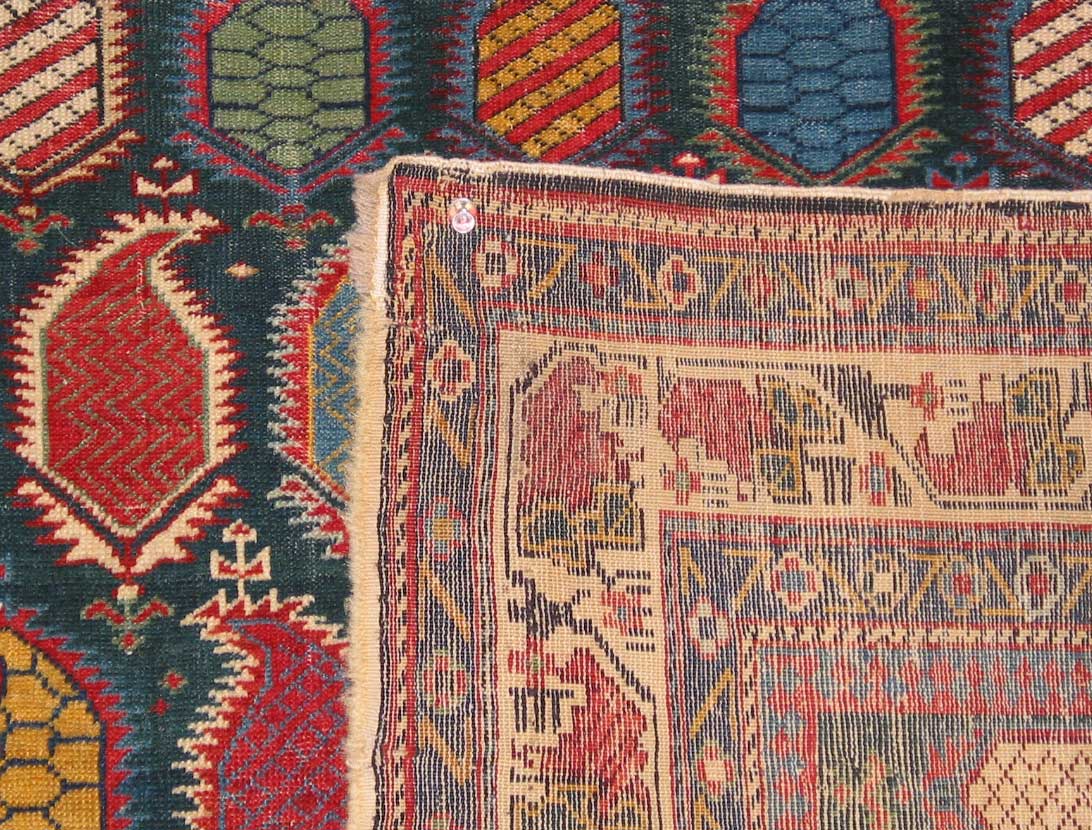|
Antique Shirvan
Marasali prayer rug,
Azerbaijan, early 19th century, 106 x 138 cm (3'6"x4"6"), published Ralph Kaffel's
Caucasian Prayer rug, plate 89
|
|
The 'curved arch' black Marasali is the rarest and earliest of the Marasali
type. B.Achdjian, the owner of this piece has a theory about them. Fewer
than ten such pieces are known, and Achdjian proposes that we multiply them
by a factor of five to arrive at the probable number that were produced. We
could then assume that about 50 such pieces were made. Even 100 pieces could
very probably be the work of one extended family of master weavers over a
generation. The similarity of dyes, structure, detailing and design, and
even the way the poly-chrome boteh are placed in sequence, puts such a
theory very much within the limits of probability.
The Marasali boteh is arguably the earliest representation of that motif in
Caucasian rugs. 'Boteh' means 'cluster of leaves' in Farsi (sometimes
translated as 'cluster of flowers') and there are many and greatly divergent
theories concerning its evolution. What is certain is that it is descended
from seventeenth- and eighteenth-century Kashmir and later Kerman 'paisley'
shawls. The 'glow' surrounding some versions of the boteh (notably Marasali)
has been interpreted as suggestive of a religious experience. In the
nineteenth century the use of this motif had been widespread throughout
Persia, the Caucasus, on Baluch rugs and in Central Asia, particularly on
Ersari rugs.
Lit: Ralph Kaffel's Caucasian Prayer rug, plate 89
Structural Analysis
Size: 4' 6" x 3' 6" (137 x 107 cm)
Warp: ivory wool
Weft: ivory wool
Pile: symmetric knots, 10h x 14v, 140kpsi
Colors: (9) light red, dark red, white, gold, dark blue, medium blue, medium
green, dark green, brown
Ends: warp fringe
Sides: overcast with white cotton


 |



